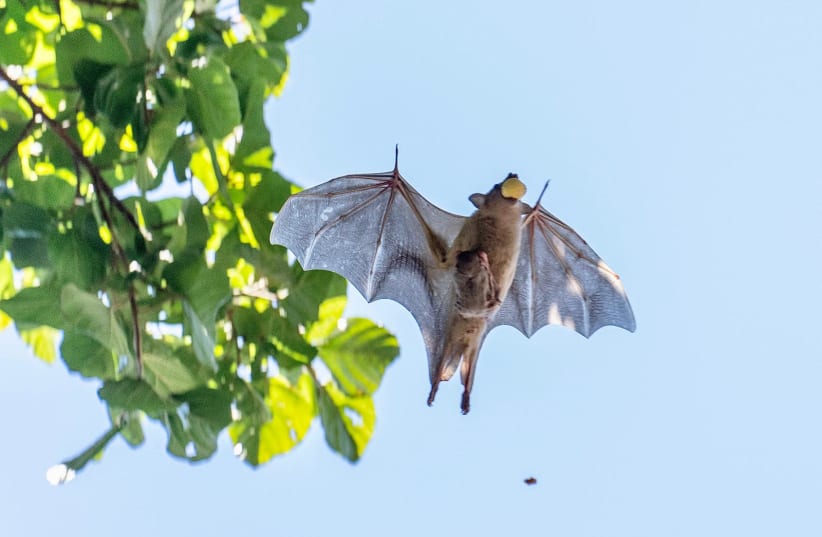Researchers at Tel Aviv University found that certain bats, who were thought to be mainly active at night, navigate well even during the day using a combination of excellent vision and echolocation.
How do you study bats?
The study, which is set to be published in the peer-reviewed journal Current Biology, noted that in recent years an increasing phenomenon has been noticed in Israel, particularly in Tel Aviv but also in other cities, in which Egyptian fruit bats roam around even during the day.
The researchers investigated what happens when the bats are active during the day, and whether they are aided by their unique bio-sonar even in conditions of good visibility.
The researchers used photography and audio recordings of the bats’ activities throughout the day, in three varying conditions: in the morning as they went out to explore in Tel Aviv; afternoon, when they visited Tel Aviv’s sycamore trees; and while they were drinking water from an artificial pool. In each of these situations, the bats used echolocation.
PhD student Ofri Eitan said that all of the results proved the fruit bats use echolocation.
The wonders of echolocation
“We compared the bats’ landings and flights between the trees, and found that prior to landing, the bats increased the sounds they emitted in order to use the echoes to help estimate the distance to the ground," Eitan said.
"In addition, we found that even in the pools of water, bats increased the rate of their calls before coming into contact with the water and reduced it (and sometimes even ceased the calls completely) after ascending from the water to fly to an open area. On the other hand, there were cases in which the bats emerged from the pool and had a wall placed in front of them, and once again returned to the use of echolocation."
“Our results are unequivocal and show that fruit bats make frequent use of echolocation even during the day when visibility is good," Prof. Yossi Yuval said.
"We hypothesize that this is due to the fact that echolocation helps the bats to measure the distances of objects in the environment more accurately, and that their brains combine the visual information along with the auditory information," he said.
"This study shows how important integration between different senses is, just as we humans integrate visual and auditory information when we cross a street, for example.”
A previous TAU study looking at fruit bats found that the species enjoys the wide variety and abundance of food that Tel Aviv has to offer, which provides more diversity than in the country.

